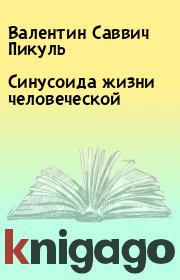Julius Chance - PreRussia
 | Название: | PreRussia |
Автор: | Julius Chance | |
Жанр: | Историческая проза, Древнерусская литература, Старинная литература | |
Изадано в серии: | неизвестно | |
Издательство: | SelfPub | |
Год издания: | 2022 | |
ISBN: | неизвестно | |
Отзывы: | Комментировать | |
Рейтинг: | ||
Поделись книгой с друзьями! Помощь сайту: донат на оплату сервера | ||
Краткое содержание книги "PreRussia"
The discoveries of recent years indicate that Russia may be older than Ancient Greece. This book includes the most valuable from dozens of sources and gives the reader a clear picture with the optimal amount of information from different fields of science on 28 pages with illustrations. At first the measured narrative gradually heats up the topic to the temperature of a supernova. The drawing "The Slavs serve their gods on the island of Ruyan" by an unknown author of the 19th century from the Wikipedia resource under CC License was used for the cover.
К этой книге применимы такие ключевые слова (теги) как: Самиздат,Древняя Русь,historie
Читаем онлайн "PreRussia". [Страница - 12]
Klassen E.I. writes that there was a river Rsa (also called Rasa) on the land owned by Troy. Wherever the Russ settle we find a river of that name. The present river Arake is an ancient Rsa; the river Araks in the Caucasus was called El-Ras by the Arabs, Orsay and Raskha by the Mongols, Ras and Oros by the Greeks. The Volga was called Rsa when the Russ and the Unna came to it from across the Caspian Sea; one of the rivers is still called Rusa in the Novgorod province where the ancient state of Alaunian Rus used to be; the river Ros flowing into the Dnieper where the Dnieper Rus state used to be; the Russian Sea (the Black Sea) where the Black Rus state used to be; the river Rusa in Moravia where the Rusniaks are still living; the river Rusa being a right tributary of the Memel (the Neman) along which the Pomorian Rus state used to be (the successor of Alaunian Rus).
Perhaps, the list of Russian and semi Russian territories is even more extensive. The well-known linguist V.D. Osipov in his article "The Karian trace" says that in Karia (Asia Minor, the southwest of Turkey) a stone was found with an inscription dating back to the 16th century BC. It is read in Slavic. What do we know about the Carians? Almost nothing apart from the fact that the "father of history" Herodotus was half a Carian… He was born and raised in Halikarkas, his father's name was Luka. It was in the middle of the VI century BC. From Herodotus we learn that in those distant times the Carians were called "Lelegs". The Pelasgians, the ancestors of the Slavs, were also called Lelegs. And in the great city of Serbin (later renamed to Xanthos by the Greeks) founded in the VIII century BC or earlier (near the city of Lika the former capital of the Lycian Federation on the territory of modern Turkey) the "Obelisk of Xanthos" was discovered. It is a high tomb with a large column decorated with an inscription in the Lycian language. All attempts to translate the texts based on ancient Greek and other languages failed. Finally the text was fully deciphered by the priest Svetislav Bilbia (born in 1907 in Bosansko-Grahovo in Bosnia-Herzegovina) using the ancient Serbian language and the alphabet from Lydia and Lycia. So, the territory of modern Turkey also has some previous Slavic strata.
The Russian academician Chudinov V.A. easily deciphered many Etruscan inscriptions about an era that until recently was shrouded in mystery. 47 He proceeded from Russian. The Serbian code of laws of the 8th century BC was found carved on a large stone in the alphabet "Serbica" (the so-called the Xantian Obelisk). It is read in Serbian with no much difficulty."
We know from the Vatican archives that after the fall of Etruria (Rasseni, Etruscan Twelve-Grad) and the assimilation of the Etruscans by the Romans, some of the Etruscans left the Apennines to the Russian Plain on the east (according to the instructions on the map) and founded a "second Etruria" there. The Vatican itself is built on the ruins of the City of the Dead named after the pagan goddess Vatican. The city was built by the Etruscans (which are the Slavs).
Among the indigenous Italian names purely Etruscan-Russian names are frequently encountered – Danilo, Ivan, Katia, Nadia, Nastia, Natascia, Vladmir, Tania. The Italians apparently do not realize that they have many namesakes in Russia. All the inscriptions of the Venedi-Etruscans of Italy are read only in Slavic. Here is an example of a short tombstone inscription: "Lar oe celua". Translation is not required even into modern Russian. It means "I kiss her coffin" – a sorrow for the deceased woman.
Other historians deduce the date of the birth of Russia from the fact that before Peter the Great (Peter-I) the so-called "calendar since the Peace Making" was widely used in Russia. To calculate the year in that old calendar we need to add 5508 to the year of the modern calendar. For instance, the 2020 year corresponds to 7528 in it. It was still in use during the reign of Peter the Great as a number of documents are dated according to it.
![Книгаго, чтение книги «PreRussia» [Картинка № 10] Книгаго: PreRussia. Иллюстрация № 10](/icl/i/47/600847/_9.jpg)
The cover of the "Ulojeniya…" (Set of Rules for Courts) from the free repository https://commons.wikimedia.org under the CC license.
Where did this calendar come from? And what does the date of "making peace in the star temple" mean in it? Here the opinions of historians differ again. Some researchers believe that at that time the Slavs in alliance with the Turkic tribes formed the state of Great Tartary. Christian theosophists believe that the chronology there is conducted from the date of the creation of Adam and Eve by God. The historians consider that the calendar’s zero-date is the moment of signing the peace treaty between China and Tartary. If this is so, then it means that the chronology was conducted even before that. These historians believe that both the Chinese and the Slavs had calendars going back to such a fabulously distant past that not even all the priests had complete knowledge about the events mentioned in the previous calendar. That previous super-ancient calendar is called «Круго Лѣть Числобога» (или «Сороковник») in Slavic, which literary means “Circles of years of Figuregod” (sometimes referred to as "Sorokovnik"). I can easily be found on the Internet as well as in the libraries of some universities and other educational institutions.
It was necessary to cut off some too distant past from that “previous super-ancient” calendar for daily practical use by the ordinary population, leaving the original calendar only for educated priests. Such a "cut-off date" or a new starting point was the date of the signing of the peace treaty after the grandiose war between the Slavs and China. The peace deal was signed in the city of the Star Temple in Northern China just 5508 years BC.48 Thus, the Slavic state and China had existed long before that date, before the erection of the Egyptian pyramids (if we accept this standpoint).
Most of the above information has been known for a long time, but previously it was published only in the so-called "yellow" media. The "official" historians (supporters of the Norman theory) long ignored it all as "fairy tales", "myths" and "fantasies" under the pretext of the alleged absence of firm evidences. However, due to the rapid growth of the amount of "compromising material" against the Norman theory, a few years ago this information began to be published officially and scientists began to receive PhD decrees for their dissertations on this topic.
The firm evidences came in connection with the development of DNA analysis. At first it was believed that if human bones had lain for several millennia then the DNA chain in them disintegrated beyond recognition. However, later it turned out that DNA molecules decay very --">Книги схожие с «PreRussia» по жанру, серии, автору или названию:
 |
| Валентин Саввич Пикуль - Синусоида жизни человеческой Жанр: Историческая проза Год издания: 1993 |
 |
| Валентин Саввич Пикуль - В ногайских степях Жанр: Историческая проза Год издания: 1993 |
 |
| Иосиф Кантор - Ной. Всемирный потоп Жанр: Историческая проза Год издания: 2014 |




